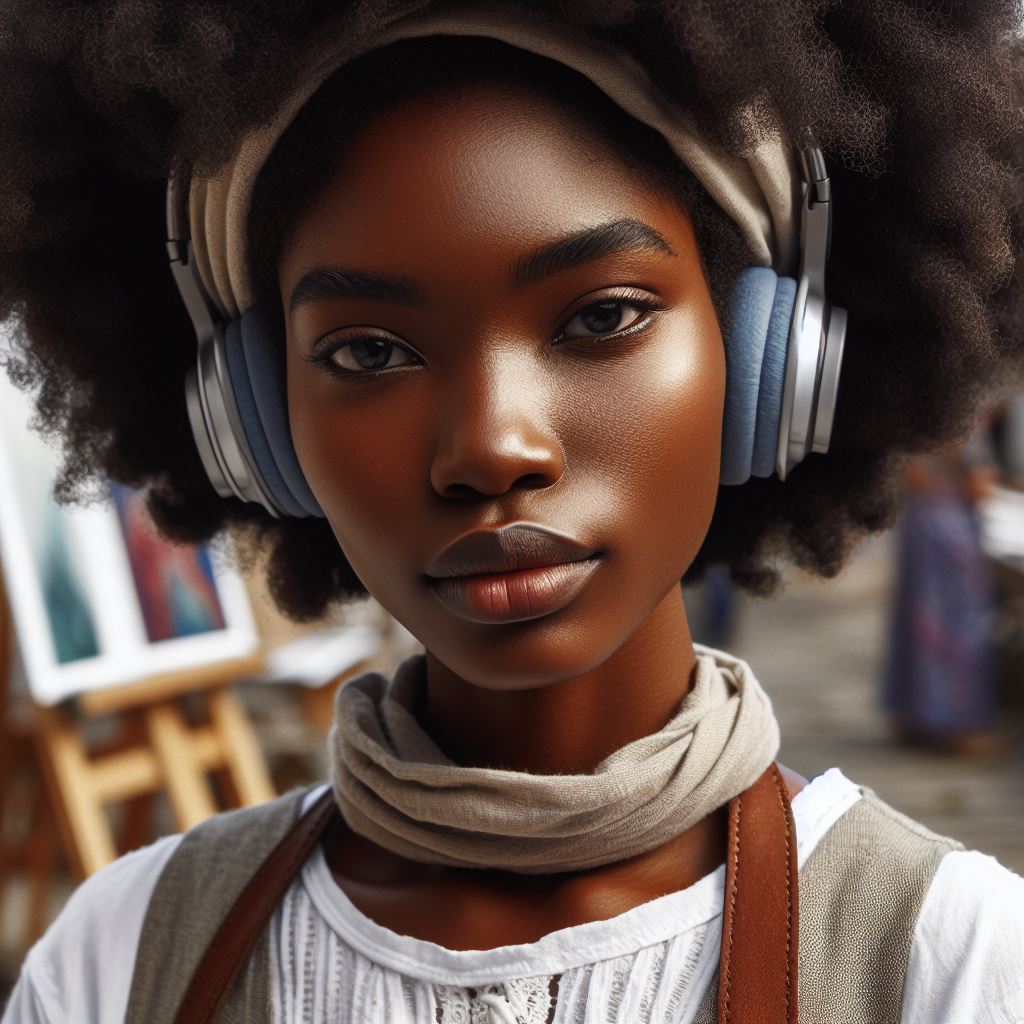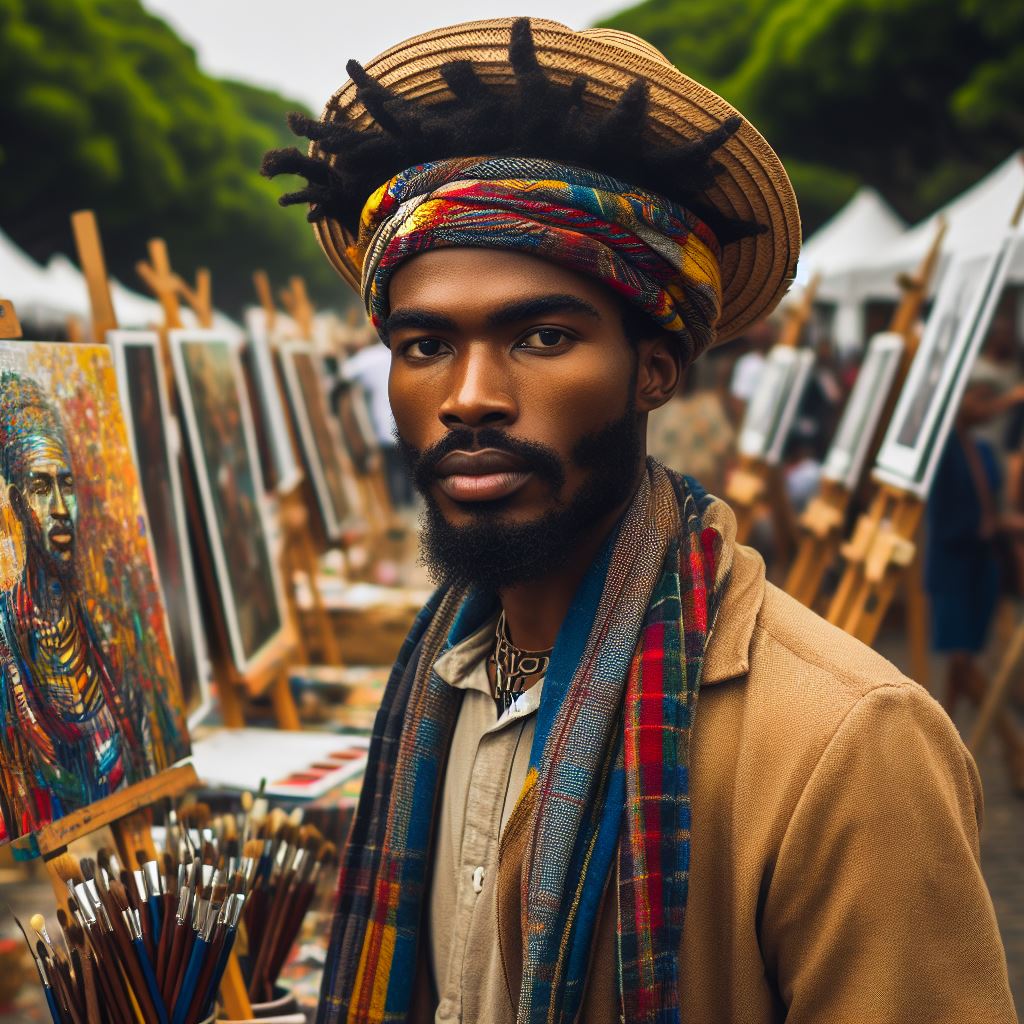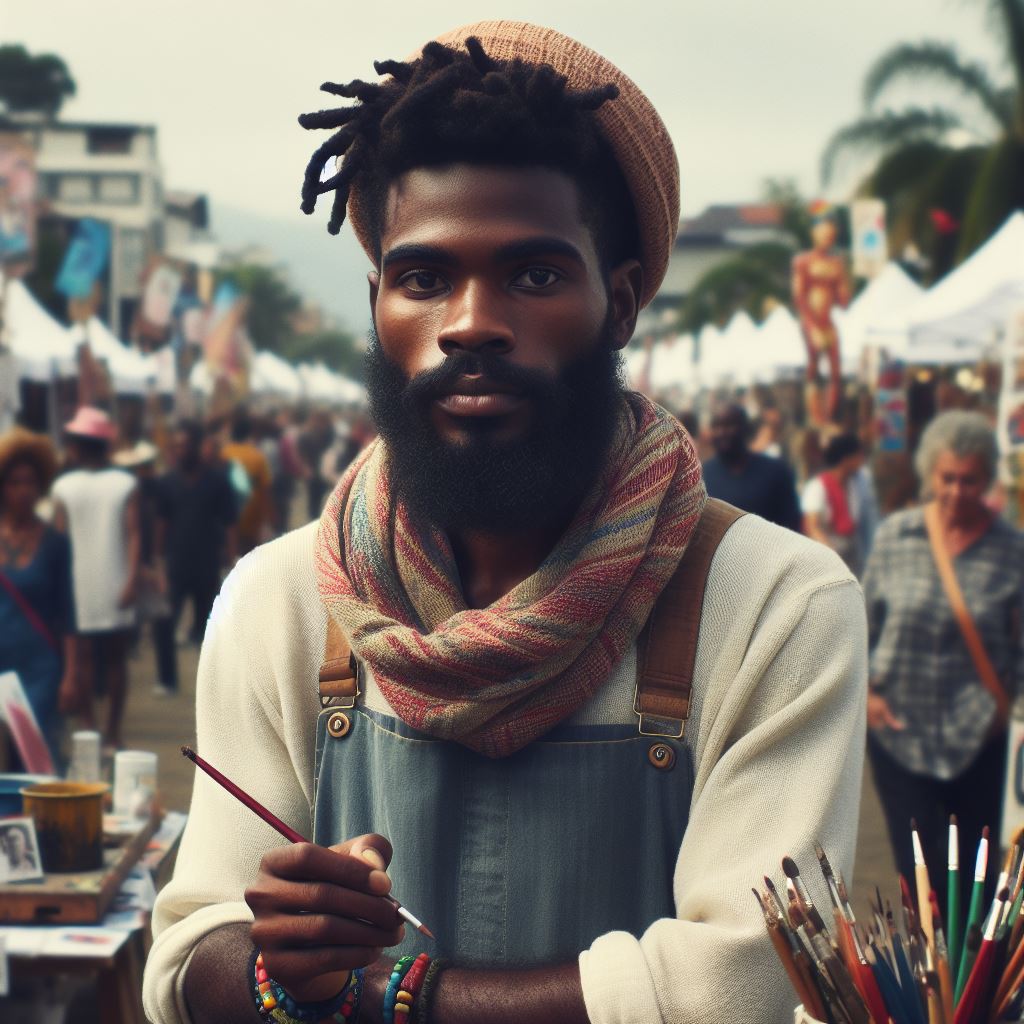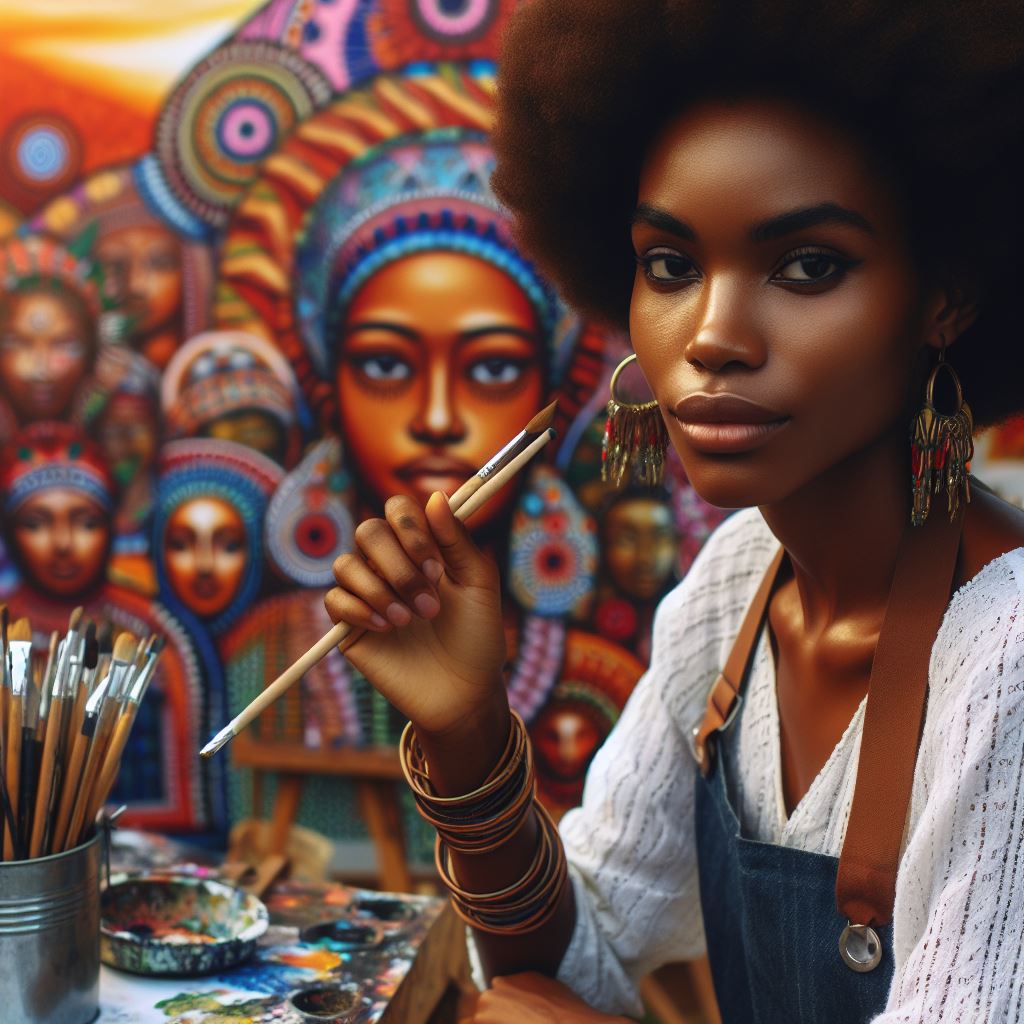Introduction
Nigerian art spans centuries, embodying the nation’s cultural tapestry, societal narratives, and historical experiences.
From traditional sculptures and textiles to contemporary installations and digital media, it encapsulates a dynamic fusion of tradition and innovation.
Understanding its evolution is not merely a journey through artistic styles but also a profound exploration of Nigeria’s identity, values, and aspirations.
At its core, Nigerian art serves as a mirror reflecting the nation’s multifaceted nature, celebrating its diversity and resilience.
Each brushstroke, carving, or composition tells a story—a narrative of triumphs, struggles, and aspirations that resonate with audiences globally.
Importance of exploring the evolution of Nigerian art
The evolution of Nigerian art parallels the country’s own journey, marked by periods of colonialism, independence, cultural revival, and globalization.
Delving into the evolution of Nigerian art reveals the intricate interplay between tradition and modernity.
Contemporary artists draw inspiration from Benin bronzes, Yoruba sculptures, preserving heritage and fostering innovation.
Meanwhile, modern Nigerian artists are exploring new mediums, techniques, and themes, navigating complex issues such as identity, politics, and globalization.
Moreover, studying the evolution of Nigerian art sheds light on the transformative power of creativity and expression.
Art has been a catalyst for social change, challenging norms, confronting injustices, and fostering dialogue within Nigerian society and beyond.
Nigerian art captivates globally, from Enwonwu’s classics to emerging talents’ bold expressions, transcending borders, bridging cultures.
In essence, the evolution of Nigerian art is a testament to the resilience, creativity, and diversity of the Nigerian people.
By exploring its rich history and vibrant present, we gain invaluable insights into the past, present, and future of Nigeria, as well as the broader human experience.
In art’s lens, we explore Nigeria’s rich legacy, celebrating beauty and complexity, fostering understanding.
Pre-colonial era
Art has always been an integral part of Nigerian culture, with traditional art forms playing a significant role in the expression of heritage and identity.
Traditional art forms in Nigeria
One of the most prominent traditional art forms in Nigeria is sculpture, which has been practiced for centuries by various ethnic groups across the country.
Other traditional art forms include painting, textiles, pottery, and beadwork, each with its unique styles and techniques.
Influence of culture and religion on art
The diverse cultures and religions in Nigeria heavily influence its art, contributing to a rich tapestry of expression.
From the intricate wooden carvings of the Yoruba people to the colorful masks of the Igbo tribe, Nigerian art reflects the spiritual beliefs and customs of its creators.
Examples of pre-colonial Nigerian art
The Nok terracotta sculptures, dating back to 500 BC, are some of the oldest examples of Nigerian art and are renowned for their realism and detail.
The Edo people crafted the Benin Bronzes in the 13th century, showcasing exquisite craftsmanship and historical importance.
The Edo people crafted the Benin Bronzes in the 13th century, showcasing exquisite craftsmanship and historical importance.
Read: Interview with Emerging Nigerian Artists
Colonial era
Impact of colonization on Nigerian art
In the colonial era, Nigerian art underwent significant changes and transformations due to the influence of European colonization.
The impact of colonization on Nigerian art was profound, as it brought about a fusion of traditional Nigerian art forms with Western artistic techniques and styles.
Introduction of Western art techniques and styles
Colonization introduced new materials, tools, and methods to Nigerian artists, leading to the adoption of Western art techniques and styles.
European art forms such as realism, impressionism, and cubism began to influence Nigerian artists, resulting in a shift towards more modern and expressive forms of art.
Resistance and preservation of traditional Nigerian art forms
Despite the introduction of Western art techniques, Nigerian artists also displayed a strong resistance to the colonization of their cultural heritage.
They sought to preserve and promote traditional Nigerian art forms, such as beadwork, pottery, sculpture, and textiles, which were integral to their cultural identity.
Many Nigerian artists actively engaged in preserving and revitalizing traditional art forms by incorporating them into their work alongside Western influences.
This fusion of traditional and modern artistic elements created a unique and diverse art scene in Nigeria during the colonial era.
Overall, the colonial era had a complex and multifaceted impact on Nigerian art.
Nigerian artists embraced Western art, fostering pride and preserving culture, evolving a dynamic heritage.
Read: How Nigerian Art Reflects Cultural Heritage
Post-independence era
In the post-independence era, Nigerian art experienced a significant transformation, with the rise of modern art movements that challenged traditional artistic practices.
This period marked a new chapter in the country’s artistic landscape, characterized by innovation and experimentation.
Rise of Nigerian modern art movements
Since gaining independence in 1960, Nigerian artists actively adopted modern styles influenced by Western movements.
Artists like Ben Enwonwu, Bruce Onobrakpeya, and Yusuf Grillo emerged as pioneers of modern Nigerian art, introducing avant-garde concepts and themes into their work.
During this period, traditional Nigerian art merged with contemporary practices, creating a vibrant cultural landscape.
Transform Your Career with Expert Guidance
Get personalized mentorship consulting that’s tailored to your unique path. Our expert advice is actionable and exclusive.
Get StartedEmergence of Nigerian art galleries and institutions
With the growing recognition of Nigerian art on the global stage, the post-independence era saw the establishment of art galleries and institutions dedicated to promoting and showcasing Nigerian art.
Notable institutions like the National Gallery of Art in Lagos and the Oshogbo Art School played a pivotal role in nurturing young talent and fostering a sense of community among Nigerian artists.
These institutions provided artists with a platform to exhibit their work, engage in artistic discourse, and collaborate with their peers, contributing to the vibrant and thriving art scene in Nigeria.
Influence of political and social factors on Nigerian art
During this period, Nigerian art was influenced by the prevailing political and social climate in the country, with artists responding to issues such as colonial legacies, ethnic tensions, and cultural identity.
Artists like Chinwe Chukwuemeka and Twins Seven-Seven used their art as a form of social commentary, addressing pressing issues facing Nigerian society and advocating for social change.
Nigerian artists, inspired by post-independence turmoil, actively challenged the status quo, pushing artistic boundaries.
Nigerian art underwent profound change post-independence, with modern movements emerging and art institutions established.
Political and social factors heavily influenced artistic expression during this period.
Read: Top Art Festivals Celebrated in Nigeria
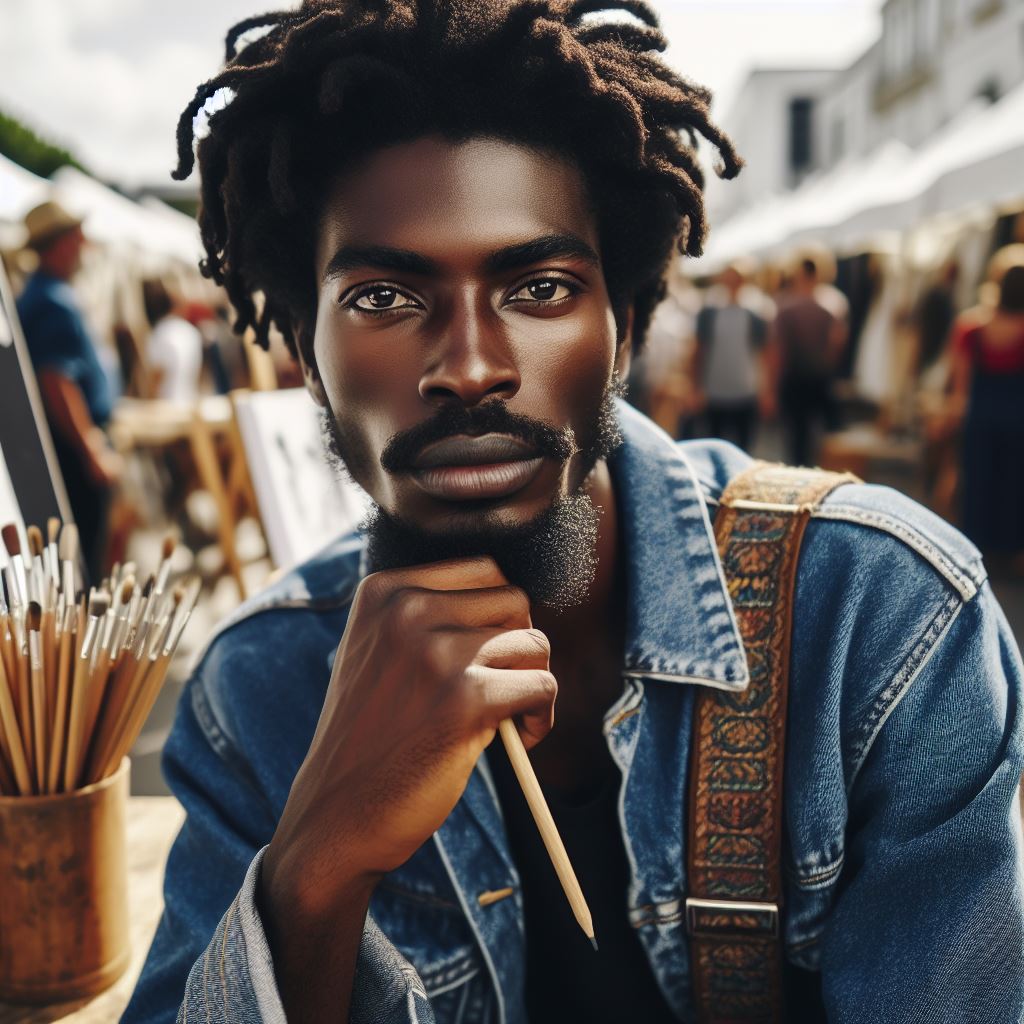
Contemporary Nigerian Art
Contemporary Nigerian art has witnessed a significant transformation over the years, reflecting the dynamic cultural landscape of the country.
Here are some key aspects that define contemporary Nigerian art:
Diversity and innovation in Nigerian art today
Nigerian artists today exhibit a wide range of artistic styles, drawing inspiration from traditional Nigerian art forms as well as global influences.
The Nigerian art scene is characterized by a diverse range of mediums, from painting and sculpture to installation art and performance art.
Contemporary Nigerian artists often explore themes such as identity, politics, and social issues, reflecting the complexities of modern Nigerian society.
There is a growing emphasis on experimentation and innovation in contemporary Nigerian art, with artists pushing boundaries and challenging traditional norms.
Global recognition of Nigerian artists
Nigerian artists have gained international acclaim in recent years, with many exhibiting their work in prestigious galleries and museums around the world.
Art collectors and critics are increasingly recognizing the talent and creativity of Nigerian artists, leading to a rise in demand for Nigerian art globally.
Nigerian artists are participating in international art fairs and biennales, further cementing their reputation on the global stage.
The global recognition of Nigerian artists is a testament to the quality and relevance of contemporary Nigerian art in the global art scene.
Incorporation of new media and technologies in Nigerian art
Contemporary Nigerian artists are embracing new media and technologies in their artistic practice, incorporating digital tools and techniques into their work.
From digital art and video installations to interactive media and virtual reality experiences, Nigerian artists are at the forefront of innovation in the art world.
The integration of new media and technologies in Nigerian art has opened up new possibilities for artists to engage with audiences in novel and immersive ways.
This fusion of traditional artistic practices with modern technologies has resulted in a vibrant and dynamic art scene in Nigeria, showcasing the country’s rich cultural heritage in a contemporary context.
Read: Exploring the Nigerian Contemporary Art Scene
Challenges and Opportunities
Preservation of traditional Nigerian art forms
Preserving traditional Nigerian art forms is crucial for maintaining cultural identity.
Many traditional art forms are at risk of being lost due to modernization.
Efforts should be made to document and pass down traditional art techniques.
Art institutions and museums can play a key role in preserving these art forms.
Support from government and cultural organizations is essential for the sustainability of traditional art.
Support for emerging Nigerian artists
Emerging Nigerian artists face challenges in gaining recognition and support.
There is a need for mentorship programs to help young artists develop their skills.
Organizing exhibitions and art fairs can provide exposure and networking opportunities for emerging artists.
Support from art collectors and patrons can help sustain the careers of emerging artists.
Collaboration with established artists can also help emerging talents learn and grow in their practice.
Role of government and society in promoting Nigerian art
Government policies and funding can greatly impact the growth of the Nigerian art scene.
Investments in art institutions and cultural initiatives can stimulate artistic development.
Government support can also facilitate international collaborations and cultural exchanges.
Creating art education programs in schools can cultivate a new generation of artists and art enthusiasts.
Society’s recognition and appreciation of Nigerian art can further validate the importance of artistic expression.
Conclusion
As we have delved into the evolution of Nigerian art over decades, it is evident that the art forms in Nigeria have undergone significant transformations.
From traditional art forms to modern and contemporary art, Nigerian artists have showcased their talent and creativity across various mediums.
It is important to recognize and celebrate Nigerian art for its cultural significance and artistic excellence.
By acknowledging and promoting Nigerian art, we preserve our cultural heritage and support the talented artists who continue to create inspiring works.
Looking ahead, the future prospects for the Nigerian art industry are promising.
With a growing interest in African art globally, Nigerian artists have the opportunity to gain more recognition and impact the global art scene.
The rise of Nigerian art galleries, art fairs, and exhibitions also contribute to the growth and visibility of Nigerian art.
The evolution of Nigerian art over decades reflects the diversity, creativity, and resilience of Nigerian artists.
Embracing Nigerian art preserves our cultural identity, showcasing talent and innovation to the world.

